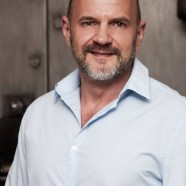
When most people hear the word energy in relation to workspaces, terms such as energy usage or energy efficiency typically come to mind. But for a growing number of businesses, architects and space designers, discussions about workspace energy focus on the degree to which it represents a healthy, sustainable, vibrant and productive working environment. Today, when architects and planners design workspaces, they are looking at them from the perspective of how well they facilitate the flow of creative and productive energy.
Office workspace environments have undergone tremendous changes over the years. For decades, individual isolated offices were the norm. Eventually, private offices gave way to vast open cubicle farms. Both of these designs physically isolated workers from one other, creating what many came to view as an unhealthy energy in terms of the working environment they projected. By keeping individual workers isolated, these office layouts were inhibiting the flow of creative and productive energy throughout the workspace.
Old-style workspaces were known for poor acoustics, inflexibility, limited views and an overall working environment that was not conducive to collaboration and the free flow of ideas. As a result, the energy of many of these working environments did not promote creativity, productivity or worker satisfaction. In fact, many workers found that these types of environments actually reduced the creative and productive energy of a workspace. Employees often found them to be dull and lifeless, sapping much of their creative energy and ambition.
However, driven by technological advances, changes in work styles and broad cultural shifts, today’s workspaces are changing for the better. Astute planners and designers are focusing on the type of energy working environments project. Instead of just looking at how many desks or workstations can be stuffed into a space, they are considering factors such as natural light, views, airflow, acoustics and ensuring that workspaces radiate positive energy that facilitates productivity, collaboration, worker comfort and the free flow of ideas and creativity.
Major corporations such as Facebook, Google, Apple and countless more have found that today’s employees—particularly Millennials—favor collaboration over isolation and that they are at the productive best in open, flexible working environments. These cutting edge working environments have plenty of natural light, good airflow and sightlines, and plenty of open places for informal meetings and collaboration.
To further foster a positive energy that fosters creativity, productivity, collaboration and increased employee satisfaction, today’s office planners are increasingly designing working environments that change the focus from my space to our space. They are accomplishing this by removing walls and lowering barriers that inhibit the free flow of ideas, conversation and collaboration. In doing so, they are finding that they can increase the company’s bottom line while also reducing costly employee turnover.
Whether you work from home by yourself or are looking to design a space for hundreds of employees, you should explore ways in which to boost the positive energy your working environment radiates. Doing so can boost creativity, improve satisfaction and make your working environment a much more pleasant space.
Ronald Flavin is an internationally acclaimed Business Organizational Strategist who has specific expertise in developing and writing grant proposals for businesses of all sizes as well as for non-profit organizations, government agencies and educational institutions.









